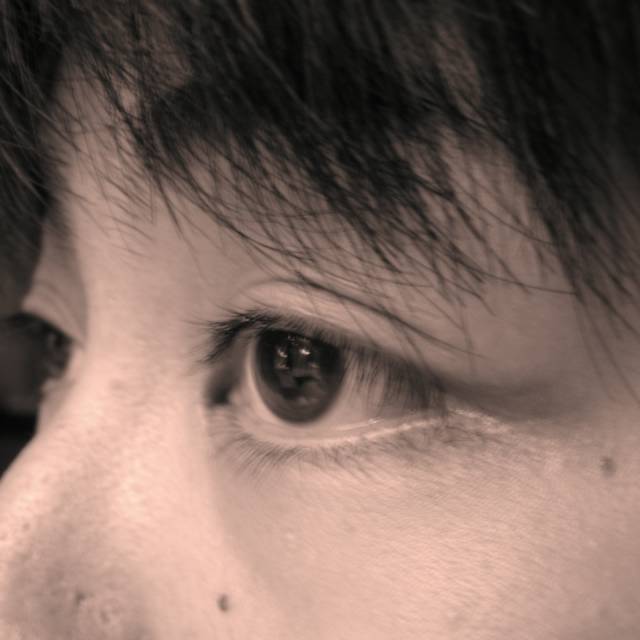educating the ignorant adults on autism: review of "the curious incident of the dog in the night-time" by Mark Haddon
I just finished ploughing through "the curious incident of the dog in the night-time," a fad book of a few months ago, which my boyfriend had picked up. Written by a British author Mark Haddon, who worked with autistic people in his younger days and has written numerous children's books, the book is narrated from the perspective of a fifteen-year-old autistic boy. I wasn't aware of any of this background information, however, when I started reading it. Despite my ignorance, within the first page, I couldn't help noticing a strange feel of the sentences. The sentences sounded oddly redundant and fixated, almost obsessive to precise details, even though the subject of each sentences are slightly different from the one before. The lack of narrator's emotional response to the subject or descriptions to evoke readers' emotional attachment to the subject also added to the strange feel.
It was seven minutes after midnight. The dog was lying on the grass in the middle of the lawn in front of Mrs. Shears's house. Its eyes were closed. It looked as if it was running on its side, the way dogs run when they think they are chasing a cat in a dream. But the dog was not running or asleep. The dog was dead. There was a garden fork sticking out of the dog. The points of the fork must have gone all the way through the dog and into the ground because the fork had not fallen over. I decided that the dog was probably killed with the fork because I could not see any other wounds in the dog and I do not think you would stick a garden fork into a dog after it had died for some other reason, like cancer, for example, or a road accident. But I could not be certain about this.
I must have made some noise, like "hmm" or "hah" at this, for my boyfriend asked me from across the room (where he was watching a show on his laptop) what was wrong. I told him that the sentences were strange, that the narrator seemed to be overly meticulous about the tiniese precision. Then he gave me the above mentioned information, which was readily available in one of the first pages of the book.
The author keeps the tone throughout the novel. The boy's obsession with precision and the emotional barrenness remains constant, letting the readers (at least partially) experience the psyche of an autistic. The rational explanations the narrator gives for his "socially unacceptable" behaviors, such as groaning loudly when a subway's roar fills the station (he groans so as not to hear anything else that feels threatening to him) and fighting ferociously against any attempt of bodily contact (he really hates to be touched, even by his parents), provides clues to the readers to understand other autistics.
As the story unfolds, the detective work of the boy to find out who killed the dog with the garden fork slips into the painful disclosure about his own family. It is very much like a novel an author of children's books might write: it's informative (about autism and the autistics), its main subject is the issue of a family with an autistic, its climax is his conventional kids-lit journey to London, which is a huge adventure for him as an autistic boy who hates anything new, and it ends in a quite hackneyed yet annoyingly moving way, suggesting a bit of realistic hope of reconciliation. In that sense, it is very formulaic.
Indeed, one can probably say that it IS a children's literature. Only that in this case, children refer to adults, who, like children, are quite ignorant of autism. The author skillfully and observantly recreate the psyche of the autistic narrator, and presernt it in a readable, even enjoyable manner. There's the mystery of the dog-murderer, which first drives the story and then it serves as an introduction to the difficulty of being an autistic and being with an autistic. What happenes in the story is only secondary to the author's intention to spread the correct understanding of autism, just like an adventure of an orphaned child, however exciting it might be, might be intended to serve the purpose of advocating the importance of friendship and trust, in any other chldren's literature.
To his credit, it works quite beautifully. The read is compelling, and is full of practical knowledge about autism. (For instance, after reading the book, I'll probably give it a hair more thought before I give hairy eyeballs to a parent of a screaming child in a department store.) It is also thought-provoking, as to how hard it must be to be and to be with an autistic all the time. I, as a reader, have a priviledge to skip all the draining details the narrator gives in the book, which a family of an autistic doesn't have. Similarly, when the narrator says "then I screamed for about half an hour," I don't hear him scream for about half an hour. I just read that sentence in about two seconds. And it still is tiresome in accumulation. "Just imagine if it is real," I thought to myself more than once.
It's not a great literature or anything, and it probably doesn't intend to be one. It is a clever endeavor to benefit the autistics and their family. And in the light of its commercial success, which means a large readership, it is a triumph. All I hope is that the information provided in the book is correct, and that it will cultivate some understanding and acceptance in our society.



0 Comments:
Post a Comment
<< Home